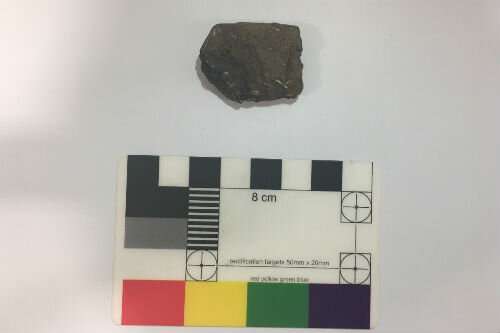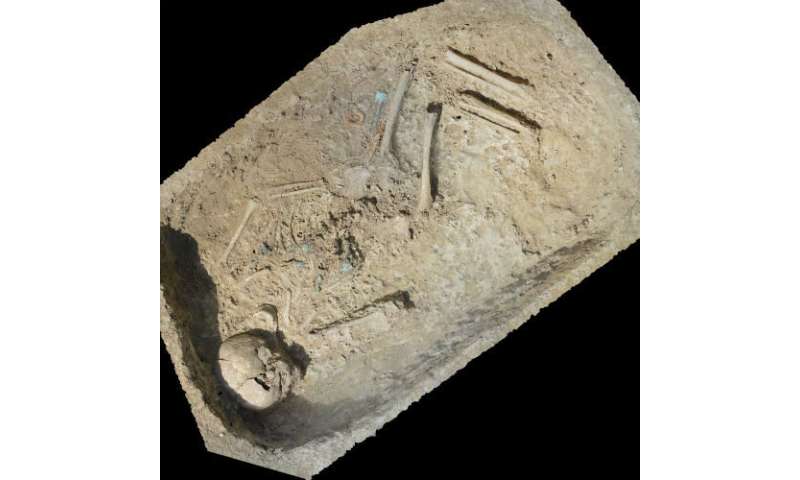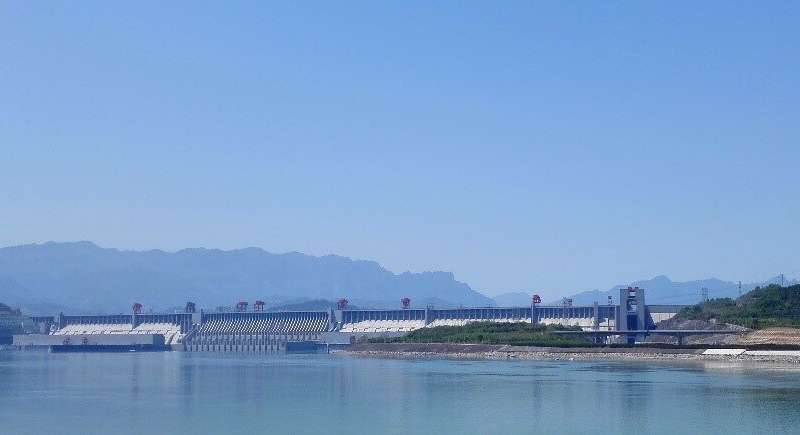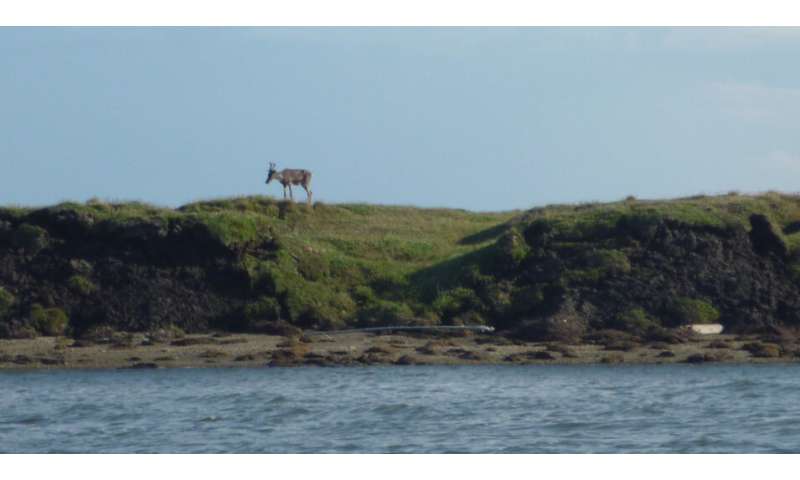Stone throwing chimps appear to like the sound when it hits a tree

A team of researchers from the Max Planck Institute of Evolutionary Anthropology and Aix-Marseille University has found evidence that suggests a group of chimpanzees who throw stones at trees appear to do so for the acoustical effect. In their paper published in the journal Biology Letters, the group describes experiments they carried out with stone throwing and trees and what they learned from them.
Three years ago, the team with this new effort discovered a surprising behavior by four groups of chimps in West Africa—they would individually lob stones at trees while simultaneously screaming. At the time, the researchers noted that the chimps appeared to have favorite trees for the stone lobbing—such trees had piles of stones at their bases. The four chimp groups were found in Liberia, Guinea-Bissau, Ivory Coast and Guinea. The researchers noted that the behavior appeared to be localized, which suggested its purpose was a local tradition. At the time, the researchers suggested the stone throwing was likely part of some ritual, though it was not clear what purpose the ritual might have served.
In this new effort, the same group of researchers sought to find out why the chimps were throwing the stones at the trees. Suspecting that there might be an acoustical connection, they made their way to the same place they had witnessed the stone throwing three years before and identified the trees that were the targets of the stones. They then set up microphones to capture the sounds that of stones tossed at the trees—to speed things up, they lobbed the stones themselves. They also set up microphones at other trees and threw stones at them, as well. In all, the researchers tested 13 different kinds of trees under various scenarios, noting how muted or bright the sounds were, how percussive and how long the sound persisted.
The researchers report that they found that the chimpanzees tended to favor certain tree species with exposed roots—they also found that when rocks struck the roots of such trees, the sounds were lower and lasted longer than was the case for other trees. The group suggests their findings indicate the chimps throw the stones at the trees because of the sound it makes—though they are still no closer to understanding why the chimps would care.
More information: Ammie K. Kalan et al. Chimpanzees use tree species with a resonant timbre for accumulative stone throwing, Biology Letters (2019). DOI: 10.1098/rsbl.2019.0747
https://plawiuk.blogspot.com/search?q=ENGELS
More information: Ammie K. Kalan et al. Chimpanzees use tree species with a resonant timbre for accumulative stone throwing, Biology Letters (2019). DOI: 10.1098/rsbl.2019.0747
Journal information: Biology Letters
















